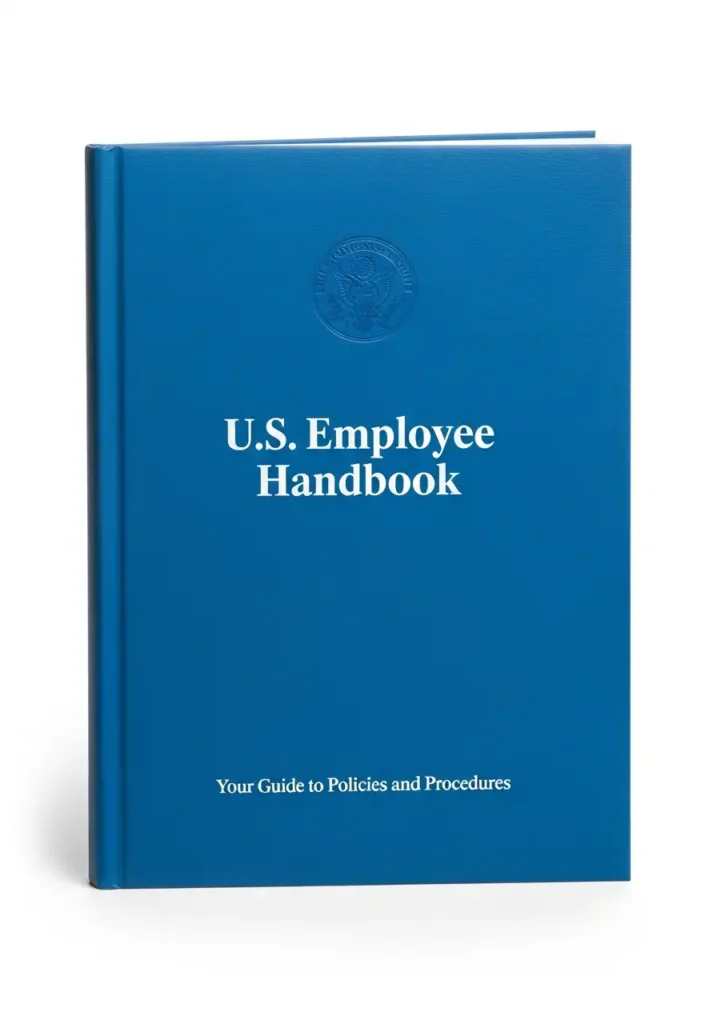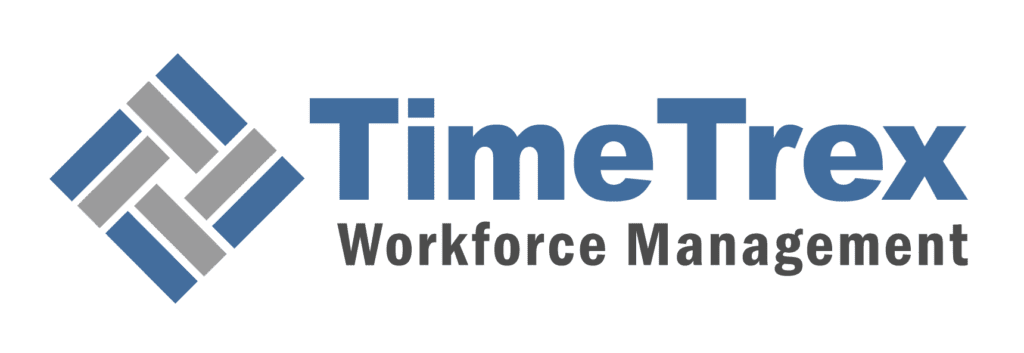
An Easy Guide to Crafting a U.S. Employee Handbook
For any U.S. employer, the employee handbook is one of the most critical HR documents your organization will ever produce. A well-crafted employee handbook serves as a strategic asset—it’s a first impression for new hires, a daily guide for managers, a cultural touchstone, and your primary line of defense in legal disputes. Conversely, a poorly constructed handbook is a significant liability that can create unintended contracts, undermine your legal defenses, and lead to costly litigation. This guide provides an exhaustive framework for creating an employee handbook that masterfully balances its two core functions: serving as a legal and operational shield while also functioning as a powerful tool for employee engagement and cultural alignment.
TL;DR
An employee handbook is essential for U.S. employers to mitigate legal risk and establish clear expectations. It must include critical legal disclaimers, most importantly affirming the at-will employment relationship. Key policies include Equal Employment Opportunity (EEO), anti-harassment, wage and hour compliance (FLSA), and legally mandated leaves (FMLA, USERRA). The handbook must be customized for all state and local laws where you have employees, especially for a remote workforce. Write in clear, simple language, avoid making promises, and align the tone with your company culture. Finally, ensure every employee signs an acknowledgment of receipt and review/update the handbook annually with legal counsel to maintain compliance.
Article Index
The central challenge in drafting a modern employee handbook is navigating the inherent tension between its legal and cultural roles. Many companies err by focusing too heavily on one to the detriment of the other. An overly formal handbook, saturated with legal jargon, is often ignored by employees and fails to build a cohesive culture. Conversely, a handbook that is too casual or uses familial, promissory language can inadvertently create an implied employment contract. This can destroy the at-will employment relationship, a cornerstone of U.S. employment law, and expose the company to significant legal risk.
Statements like, "We are committed to your long-term growth," can be interpreted by a court as a promise that negates at-will employment. This was a central issue in the case of Staschiak v. Certified Logistics Inc., where a handbook's legally careless language was seen as potentially creating a contract precisely because it lacked the proper disclaimers. The expert approach is to strategically weave legally mandated, protective language into a document that still reflects the company's authentic voice and culture.
The Legal and Strategic Foundation
This section establishes the bedrock legal principles upon which every compliant and effective employee handbook must be built. Understanding these concepts is not optional; it is fundamental to mitigating risk.
The "Why": Purpose and Legal Significance
While no federal law explicitly requires a private U.S. employer to have an employee handbook, it is a universally acknowledged best practice for organizations of all sizes. The practical reality is that many states and localities do require employers to provide certain policies to employees in writing, making a comprehensive handbook the most efficient vehicle for compliance.
For the employer, it is a critical tool for risk management and operational consistency. It formalizes company policies, ensuring that managers apply rules consistently, which is a key defense against claims of discrimination. For the employee, the handbook provides essential clarity, outlining what the company expects from them and what they can expect in return regarding benefits, leave, and compensation.
The At-Will Doctrine: Your Most Critical Disclaimer
At-will employment is the default legal standard in 49 of the 50 U.S. states (Montana is the exception). This doctrine holds that either the employer or the employee can terminate the employment relationship at any time, for any reason, or no reason at all, as long as the reason is not illegal (e.g., discriminatory). Given its importance, the handbook must contain a prominent, unambiguous statement affirming the at-will relationship. This disclaimer should explicitly state that the handbook is not a contract and does not alter the employee's at-will status.
Failure to protect the at-will relationship is a primary source of wrongful termination lawsuits stemming from legally recognized exceptions:
- Public Policy Exception: Recognized in 42 states, this prohibits firing an employee for reasons that violate public policy, such as refusing to break the law or filing a workers' compensation claim.
- Implied Contract Exception: Recognized in 44 states, this is the most significant handbook-related risk. An implied contract can be created when policies suggest termination will only occur for "just cause." Rigid progressive discipline policies are a classic trap.
- Covenant of Good Faith and Fair Dealing: Recognized by a minority of states, this prevents an employer from terminating an employee with malice, for example, firing a salesperson just before a large commission is due.
The Handbook as a Legal Shield: The Faragher-Ellerth Defense
A well-drafted and properly disseminated anti-harassment policy is an affirmative legal defense established by the U.S. Supreme Court. In harassment cases that did not result in a tangible employment action (like termination), an employer can avoid liability by proving two elements:
- That the employer exercised "reasonable care" to prevent and correct harassing behavior (i.e., had a strong, clear policy and complaint procedure in the handbook).
- That the employee unreasonably failed to use the employer's reporting procedure.
This powerful defense, known as the Faragher-Ellerth defense, underscores how a properly implemented handbook can be an employer's most valuable asset in litigation.
Core Architectural Components of a Compliant Handbook
This section provides a detailed blueprint of the essential sections and policies that form the structure of a comprehensive employee handbook.
Foundational Elements (The "Front Matter")
- Welcome Statement & Company Overview: Open with a message from leadership to introduce the company's mission, vision, and core values, setting a positive cultural tone.
- Purpose of the Handbook: Briefly explain that the handbook is a guide to company policies, benefits, and expectations.
- Critical Disclaimers (Non-Negotiable): This is the most legally important part of the introduction. It must include:
- At-Will Employment Statement: A clear, prominent statement affirming the at-will relationship.
- No Contract Disclaimer: An explicit declaration that the handbook is not an employment contract.
- Right to Revise: A statement reserving the company's right to modify policies at any time, which is crucial for maintaining flexibility.
Equal Employment and Anti-Harassment Policies
These policies are the cornerstone of a respectful workplace. They must affirm the company's commitment to equal opportunity and prohibit discrimination based on all federally protected classes (race, color, religion, sex, national origin, age, disability, genetic information) as well as any additional classes protected by state or local laws. The anti-harassment policy must be detailed, defining and prohibiting all forms of unlawful harassment and including:
- A clear complaint procedure with multiple reporting channels.
- A strict anti-retaliation provision.
- A statement promising a prompt, thorough, and impartial investigation.
Compensation, Work Hours, and Wage/Hour Compliance
Mistakes here are a frequent source of litigation. These policies must comply with the federal Fair Labor Standards Act (FLSA) and stricter state laws.
- Employment Classifications: Clearly define Exempt, Non-Exempt, full-time, part-time, and temporary employees.
- Timekeeping: Require all non-exempt employees to accurately record all hours worked and expressly prohibit "off-the-clock" work.
- Work Schedules, Meal, and Rest Periods: Detail standard hours and break policies, ensuring they comply with the specific laws of the states where employees work.
- Overtime: State that non-exempt employees will be paid overtime as required by law. The policy should require supervisory approval for overtime but clarify that unapproved overtime worked will still be paid.
- FLSA "Safe Harbor" Policy: This is a non-negotiable policy for any employer with exempt employees. It provides a legal defense against losing the overtime exemption by establishing a clear complaint mechanism for reporting and resolving improper salary deductions.
Leave and Time Off Benefits
This section must distinguish between legally mandated leaves and discretionary company benefits.
- Legally Mandated Leaves: Include policies for all applicable federal, state, and local laws, such as the Family and Medical Leave Act (FMLA), USERRA for military service, and state-specific leaves for jury duty, voting, paid sick time, or pregnancy disability.
- Company-Provided Time Off: Clearly explain how vacation, sick leave, or PTO is accrued, requested, and carried over. The policy must also state whether unused time will be paid out upon termination, adhering to state-specific requirements.
Code of Conduct and Workplace Expectations
This section establishes behavioral norms. Policies should cover standards of conduct, dress codes, a drug and alcohol policy (carefully drafted to comply with ADA and state marijuana laws), and rules for workplace safety and violence prevention.
Technology, Data Security, and Confidentiality
These policies are critical for protecting company assets. The Acceptable Use Policy must establish rules for company technology and, most importantly, state that employees have no expectation of privacy when using company systems. This was a key factor in the Holmes v. Petrovich Development Co. case, where the employer's clear policy allowed them to use an employee's emails as evidence. Other essential policies include social media guidelines and rules on protecting confidential information and intellectual property.
Performance, Discipline, and Separation
To preserve at-will employment, the disciplinary action policy must state that the company reserves the right to determine the appropriate level of discipline, up to and including immediate termination, at its sole discretion. Avoid creating a rigid, mandatory progressive discipline system. Use flexible terms like "may" and "typically" instead of "will" and "must".
Navigating the Complexities of Federal, State, and Local Laws
A "one-size-fits-all" employee handbook is legally indefensible for any company with employees in more than one state. Customization is a legal necessity.
The Hierarchy of Employment Law
The foundational principle of U.S. employment law is that employers must comply with the law—federal, state, or local—that provides the greatest protection to the employee. This applies across a wide spectrum of issues, from minimum wage to leave entitlements.
State-Specific Policy Deep Dive
The differences between state employment laws are vast. A policy that is legal in Texas may be non-compliant in California or New York.
- California: Requires written policies on harassment, has stringent meal and rest break rules, mandatory paid sick leave, business expense reimbursements, and specific harassment prevention training requirements.
- New York: Mandates paid sick leave, paid family leave, and has specific legal requirements for lactation accommodation and final paychecks.
- Texas: Adheres more closely to the federal baseline on many issues but has specific statutes governing topics like jury duty leave and firearms in company parking lots.
| Jurisdiction | At-Will Exceptions Recognized | Mandatory Paid Sick Leave | Harassment Training Required | Meal & Rest Break Rules |
|---|---|---|---|---|
| Federal Baseline | N/A (Statutory exceptions like discrimination) | No | No (Recommended by EEOC) | No (Breaks under 20 mins must be paid) |
| California | Public Policy, Implied Contract, Good Faith & Fair Dealing | Yes | Yes (For all employees) | Yes (Mandatory, unpaid 30-min meal break; paid 10-min rest breaks) |
| New York | Public Policy, Good Faith & Fair Dealing | Yes | Yes (For all employees) | Yes (Mandatory meal breaks, duration depends on shift length) |
| Texas | Public Policy, Implied Contract | No (Local ordinances may apply) | No (Recommended) | No (Follows federal standard) |
| Florida | None of the three major common-law exceptions | No (Local ordinances may apply) | No (Recommended) | No (Follows federal standard) |
| Note: This table is for illustrative purposes and is not exhaustive. Laws are subject to change and employers must consult with legal counsel. | ||||
Policies for a Remote and Hybrid Workforce
The proliferation of remote work has created the accidental multi-state employer. Remote employees are generally subject to the employment laws of the state and locality where they physically work. The most effective solution for managing this is a "Core + Addendum" model. This involves a main handbook with universal policies and separate state-specific addenda for unique requirements. Key remote work policies must address eligibility, equipment, expense reimbursement, work hours, and data security.
The Art of Drafting: From Content to Culture
With the legal framework established, the focus shifts to crafting a readable and effective document.
Writing for Clarity, Not for Court
The goal is to write a document that employees will actually read. Use simple, direct language and avoid legal jargon. Organize the handbook logically with a clear table of contents, descriptive headings, and bullet points to make information easy to find.
Aligning the Handbook with Company Culture
The handbook should reflect your organization's authentic voice. Begin with the company's mission and values, and weave these principles throughout the policy sections to explain the "why" behind the rules. The tone should align with your company's communication style, whether it's for a tech startup or a financial institution, without sacrificing legal integrity.
Avoiding Common Drafting Pitfalls
A critical recent development is the NLRB's 2023 decision in Stericycle, Inc. Under this standard, a workplace rule is presumptively unlawful if a reasonable employee could interpret it to restrict their right to discuss wages, hours, and working conditions. Vague rules requiring employees to "be respectful" have been found to be unlawfully overbroad. Policies must now be narrowly tailored to address specific business interests without chilling legally protected activity. Beyond this, drafters should also remember:
- Don't Use a Template Blindly: It must be customized for your specific operations and all applicable state and local laws.
- Don't Make Promises: Avoid absolute words like "always" or "will." Use flexible terms like "typically" or "may."
- Don't Ignore Employee Rights: Omitting legally required policies (like FMLA or anti-retaliation protections) is a significant liability.
- Don't Contradict Yourself: Ensure policies are consistent with each other and with the company's actual practices.
Implementation, Maintenance, and Acknowledgment
Creating the handbook is only half the battle. Its effectiveness hinges on proper implementation and ongoing maintenance.
Distribution and Training
Once finalized, the handbook must be distributed to all employees, ideally digitally via an HRIS or company intranet. Distribution alone is insufficient; training is essential. Hold sessions for all employees to review key policies, and provide separate, more detailed training for all managers and supervisors on how to apply the policies consistently.
The Acknowledgment of Receipt: Your Legal Linchpin
The signed acknowledgment of receipt is arguably the most important document an employee signs after their offer letter. Every employee must sign a form acknowledging they have received the handbook and understand they are responsible for complying with its policies. This form should also reiterate the at-will employment and no-contract disclaimers. These signed forms are invaluable evidence in a legal dispute and must be retained in each employee's personnel file.
The Living Document: A Schedule for Review and Updates
An outdated employee handbook can be more dangerous than no handbook at all. Employment laws are in a constant state of flux. The company must establish a formal process for reviewing and updating the handbook at least annually. This review should be a collaborative effort involving HR, leadership, and, most importantly, qualified employment law counsel to ensure the handbook remains compliant.
Conclusion and Final Recommendations
The employee handbook is far more than a bureaucratic formality. It is a dynamic document that sits at the intersection of law, culture, and operations. When crafted with diligence, it protects the organization from legal risk, ensures fair treatment of employees, and communicates the company's core values.
Actionable Checklist for Leadership
- Define Your Objectives: Acknowledge the need to balance legal compliance with cultural communication.
- Assemble Your Team: Involve HR, senior leadership, and external employment law counsel from the outset.
- Audit Your Current State: Review all existing policies, both written and unwritten.
- Map Your Legal Footprint: Identify all states and municipalities where you have employees.
- Draft and Customize: Write clear policies tailored to your legal obligations and culture, using a "Core + Addendum" model if multi-state.
- LEGAL REVIEW: This step is mandatory. Have a qualified employment attorney review the complete draft.
- Plan the Rollout: Develop a communication plan and schedule mandatory training sessions.
- Secure Acknowledgments: Implement a foolproof process to collect a signed acknowledgment from every employee.
- Schedule the Next Review: Put the next annual review on the calendar to ensure the handbook remains a current and valuable asset.
Ready to Build Your Compliant Handbook?
Creating a legally sound and culturally aligned employee handbook from scratch is a complex task. Use the TimeTrex U.S. Employee Handbook Generator to create a customized, state-compliant handbook tailored to your unique business needs—quickly and easily.
Generate Your Free Handbook NowDisclaimer: The content provided on this webpage is for informational purposes only and is not intended to be a substitute for professional advice. While we strive to ensure the accuracy and timeliness of the information presented here, the details may change over time or vary in different jurisdictions. Therefore, we do not guarantee the completeness, reliability, or absolute accuracy of this information. The information on this page should not be used as a basis for making legal, financial, or any other key decisions. We strongly advise consulting with a qualified professional or expert in the relevant field for specific advice, guidance, or services. By using this webpage, you acknowledge that the information is offered “as is” and that we are not liable for any errors, omissions, or inaccuracies in the content, nor for any actions taken based on the information provided. We shall not be held liable for any direct, indirect, incidental, consequential, or punitive damages arising out of your access to, use of, or reliance on any content on this page.
About The Author

Roger Wood
With a Baccalaureate of Science and advanced studies in business, Roger has successfully managed businesses across five continents. His extensive global experience and strategic insights contribute significantly to the success of TimeTrex. His expertise and dedication ensure we deliver top-notch solutions to our clients around the world.
Time To Clock-In
Start your 30-day free trial!
Experience the Ultimate Workforce Solution and Revolutionize Your Business Today
- Eliminate Errors
- Simple & Easy To Use
- Real-time Reporting

Saving businesses time and money through better workforce management since 2003.
Copyright © 2025 TimeTrex. All Rights Reserved.
